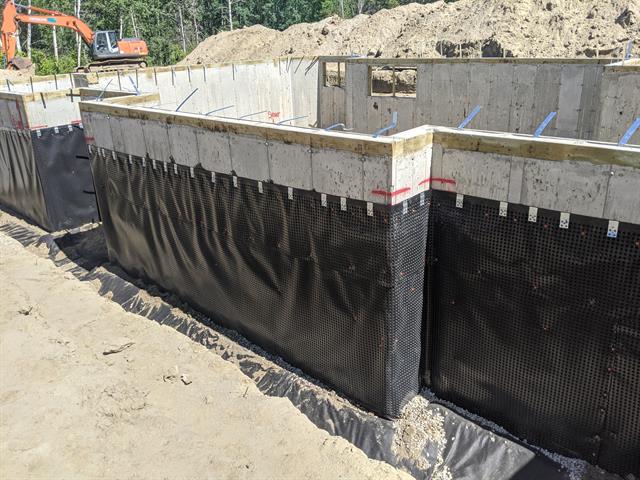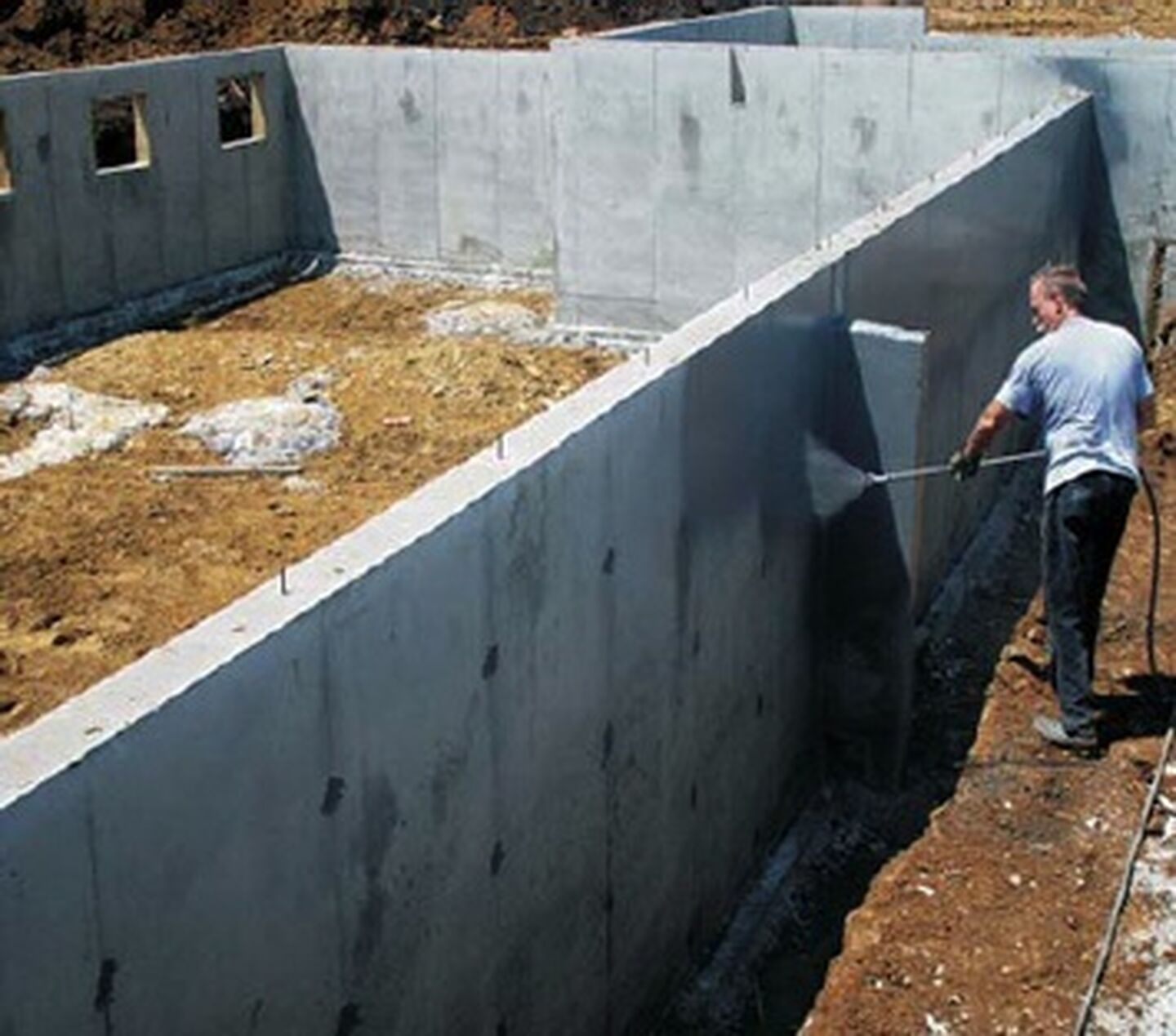Professional tips for damp specialist newcastle to preserve your building's integrity
Professional tips for damp specialist newcastle to preserve your building's integrity
Blog Article
Discovering the Numerous Strategies and Solutions for Effective Damp Proofing
Moisture in buildings poses considerable obstacles to both structural stability and indoor air high quality. Different techniques and options have arised to fight this pervasive concern. From traditional damp-proof membranes to ingenious chemical therapies, each method supplies one-of-a-kind advantages. Comprehending these alternatives is important for efficient dampness control. Nonetheless, selecting the right solution depends upon particular structure conditions and requirements, motivating further exploration into the most effective damp proofing techniques available.
Comprehending the Causes of Dampness
Although moisture can develop from different resources, comprehending these reasons is crucial for efficient remediation. Typically, dampness originates from three main sources: climbing moist, passing through moist, and condensation. Increasing damp happens when groundwater travels up-wards with porous materials, such as block or rock, commonly as a result of a lack of an effective obstacle (damp proofing newcastle). Penetrating wet is generally triggered by exterior aspects, including roofing system leakages, damaged rain gutters, or harmed wall surfaces, permitting water to penetrate a property. Condensation, on the various other hand, results from excess moisture airborne, frequently intensified by poor ventilation and temperature distinctions, causing water droplets basing on surface areas. Identifying these underlying issues is necessary, as each kind of wetness calls for a tailored approach for removal. Appropriate assessment assists in figuring out one of the most effective solutions, ultimately protecting the architectural honesty of a structure and boosting indoor air top quality
Traditional Damp-Proof Membranes

Chemical Damp-Proofing Solutions
Chemical damp-proofing remedies supply an innovative method to avoid dampness intrusion in buildings. These methods commonly involve the application of liquid chemicals that penetrate masonry and create a barrier versus increasing damp. Typically used chemicals include silanes, siloxanes, and various other water-repellent agents that react with surface materials to develop a hydrophobic layer.The application process usually needs boring openings into the wall surfaces, injecting the chemical service, and permitting it to treat. This technique is particularly helpful for older structures where conventional damp-proof membranes may be unwise. Chemical damp-proofing can be less disruptive and much more cost-efficient than considerable improvement projects.While efficient, these solutions depend on correct application and ecological conditions for peak efficiency. damp removal newcastle. Normal upkeep and monitoring are necessary to assure the long life of the damp-proofing treatment. In general, chemical damp-proofing stands for a versatile alternative for safeguarding buildings versus moisture-related damages
Dental Caries Wall Surface Construction Strategies
Tooth cavity wall surface building techniques provide many benefits, especially in dampness control and power efficiency. By incorporating an air void in between 2 layers of stonework, these walls effectively reduce water ingress while enhancing insulation. This mix not just secures structures from wetness but also contributes to reduced energy consumption.
Advantages of Dental Caries Wall Surfaces
When taking into consideration efficient wet proofing techniques, the benefits of cavity wall surfaces stand out prominently. Tooth cavity walls contain 2 different layers, developing an air space that efficiently lowers wetness infiltration. This design reduces the threat of moisture, as the external wall surface functions as a barrier against rainfall and water access. Additionally, dental caries walls boost thermal insulation, which contributes to power performance by minimizing warmth loss. They additionally give sound insulation, helping to create a quieter interior atmosphere. In addition, the air gap permits air flow, which aids in wetness control and decreases the chance of mold development. These advantages not only boost the overall comfort of a building however also contribute to its long life and architectural integrity.
Moisture Control Methods
Reliable wetness control approaches are crucial in dental caries wall construction to guarantee long-lasting defense versus dampness. One primary technique entails the consolidation of weep openings, which help with water drain from the dental caries, preventing buildup. In addition, making use of breathable membranes can help handle moisture levels while enabling entraped vapor to run away. Appropriate placement of insulation is additionally crucial, as it should not block drain courses. In addition, ensuring that the external fallen leaves of the dental caries wall surface are built with waterproof products boosts overall resilience. Regular maintenance checks are necessary to recognize any kind of clogs or damage early, securing the framework's honesty. Eventually, a combination of these strategies creates a robust defense versus dampness invasion in tooth cavity walls.
Insulation and Energy Performance
Insulation plays a vital function in boosting energy performance within dental caries wall surface construction. By incorporating insulating products, these wall surfaces produce a thermal barrier that lessens warm loss and lowers power usage. Reliable insulation not only assists keep a steady indoor temperature yet likewise minimizes the risk of dampness, as it avoids condensation within the wall surface tooth cavity. Different techniques, such as using stiff foam boards or mineral wool, can be employed to achieve optimal insulation performance. Furthermore, appropriate installment is vital to assure that gaps and voids are minimized, which can or else endanger energy efficiency. Ultimately, a well-insulated tooth cavity wall contributes substantially to total sustainability and lowers home heating and air conditioning prices for home owners.
External Damp Proofing Approaches
Outside damp proofing methods are crucial for protecting frameworks from dampness seepage. Two reliable techniques consist of the application of waterproof membranes and the installation of French drains. These solutions help mitigate water build-up and preserve the honesty of structures.
Waterproof Membrane Application
While various methods exist for avoiding wetness access, the application of water-proof membranes stays a highly efficient outside wet proofing technique. These membranes are generally made from products such as polyethylene, rubber, or customized bitumen, providing a durable obstacle against water penetration. The installation process includes using the membrane to the exterior surface areas of wall surfaces or structures, ensuring complete protection to avoid leakages. Correct attachment and sealing at joints are essential to making the most of efficiency. Waterproof membranes can be used in different forms, consisting of fluid layers and sheet membranes, permitting versatility based on the particular demands of the structure. This method not only shields structures from moisture yet likewise boosts their durability and architectural integrity.
French Drainpipe Installation
One efficient method for handling groundwater and preventing wetness accumulation around a building's structure is the setup of a French drainpipe. This water drainage system consists of a trench loaded with gravel and a perforated pipe that redirects surface area water away from the structure. Proper setup requires cautious preparation, guaranteeing that the drain slopes far from the framework to promote perfect water flow. In addition, the area of the drain is important; it must be positioned in areas prone to pooling or excess wetness. Routine maintenance, consisting of cleaning particles from the gravel and making sure the pipe remains unhampered, is important for long-lasting efficiency. Ultimately, a well-installed French drain can substantially minimize the threat of water-related concerns in foundations and basements.
Interior Waterproofing Approaches
Interior waterproofing approaches are crucial for securing a structure's inside from dampness infiltration and prospective water damages. These strategies normally involve the application of customized products and methods made to produce a moisture obstacle within the framework. One usual technique is making use of waterproof finishings or sealers on walls and floorings, which protect against moisture from passing through surfaces.Additionally, installing indoor drainage systems, such as sump pumps, can efficiently take care of water build-up in cellars and crawl rooms. Another approach involves using vapor obstacles, which are mounted to hinder wetness motion from the ground right into living spaces.Moreover, addressing any kind of splits or voids in walls or structures with ideal sealers guarantees a detailed defense against water breach. By applying these indoor waterproofing strategies, homeowner can greatly minimize the risk of mold growth, structural damages, and other moisture-related problems. Proper execution of these strategies is necessary for long-lasting security and structure stability.
Normal Maintenance and Evaluation Practices
Normal maintenance and evaluation techniques are important for guaranteeing the long-term efficiency of damp proofing services in any type of structure. Routine checks make it possible for residential or commercial property owners to identify very early indications of dampness intrusion, such as peeling off paint, mold and mildew growth, and moldy smells. These signs can signify underlying issues that need prompt attention.Inspections ought to be conducted at least each year, concentrating on vulnerable areas like cellars, creep spaces, and exterior wall surfaces. Throughout these analyses, property proprietors ought to check out sealers, drainage systems, and air flow to verify they function correctly.Additionally, maintaining downspouts and rain gutters is crucial, as clogged up systems can bring about water buildup near the foundation. Executing a regular maintenance schedule, together with timely fixings, can considerably extend the lifespan of wet proofing measures and shield the architectural integrity of the building. Aggressive steps ultimately contribute to the total health and wellness of the living setting.
Often Asked Questions
The Length Of Time Does Damp Proofing Typically Last?
The duration of wet proofing performance varies, typically lasting in between 20 to half a century. Variables such as application high quality, ecological problems, more info and maintenance practices substantially influence the durability of the wet proofing treatment.

Can I Damp Evidence My Home Myself?
The specific considered the feasibility of DIY damp proofing. With proper study and the appropriate materials, it is feasible. Nevertheless, they likewise recognized the relevance of professional support to ensure resilient efficiency and avoid future issues.
What Are the Indications of Ineffective Damp Proofing?
Signs of ineffective wet proofing consist of persistent mildewy odors, noticeable mold development, peeling off paint, damp spots on walls, and timber degeneration - damp specialist newcastle. House owners should attend to these issues promptly to avoid more damages and health and wellness problems
Does Damp Proofing Affect Indoor Air Top Quality?

Exactly How Much Does Expert Damp Proofing Cost?
Specialist damp proofing expenses vary substantially, commonly ranging from $1,000 to $5,000 relying on the building's size, the extent of the moist issue, and picked techniques. Each situation requires a tailored assessment for accurate prices. Typically, dampness stems from 3 key sources: climbing moist, permeating damp, and condensation. When taking into consideration reliable moist proofing techniques, the benefits of tooth cavity walls stand out prominently. Outside wet proofing techniques are necessary for shielding frameworks from dampness infiltration. While various methods exist for stopping dampness access, the application of water-proof membrane layers continues to be a highly efficient outside wet proofing method. Indications of inadequate moist proofing include persistent stuffy odors, noticeable mold growth, peeling off paint, damp spots on wall surfaces, and timber decay.
Report this page